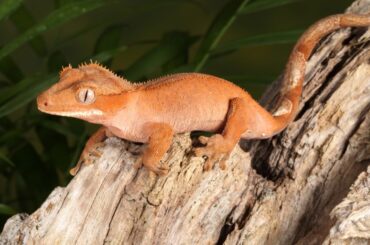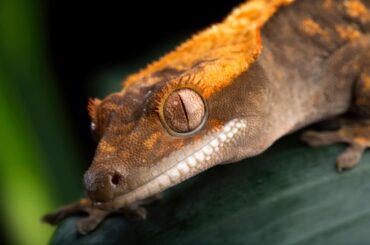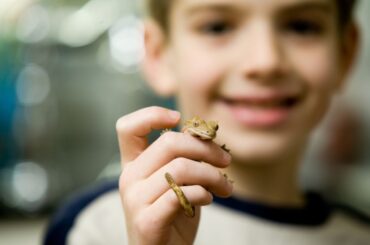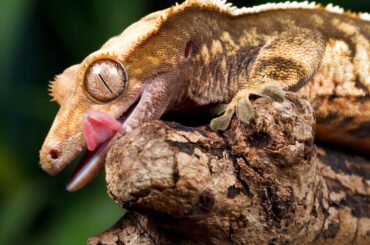Crested geckos are captivating creatures in the enchanting world of reptiles. They stand out with vibrant colors and distinctive features. There are many curiosities surrounding these arboreal wonders. One unexpected question that may come to mind is: Do crested geckos have teeth?
Ever thought about the hidden teeth of crested geckos? Do these creatures have teeth, or do they navigate toothless? Join us on a captivating exploration of the dental secrets hidden within the vibrant scales of crested geckos. Get ready for a surprising look into the fascinating world of these charming companions.
Imagine a small world where delicate creatures with bright colors have unique teeth, moving through lush foliage. Explore crested geckos’ teeth and marvel at nature’s unique features in these captivating creatures. Let’s uncover their dental secrets and understand the importance of their teeth in daily life.
Teeth in Crested Geckos
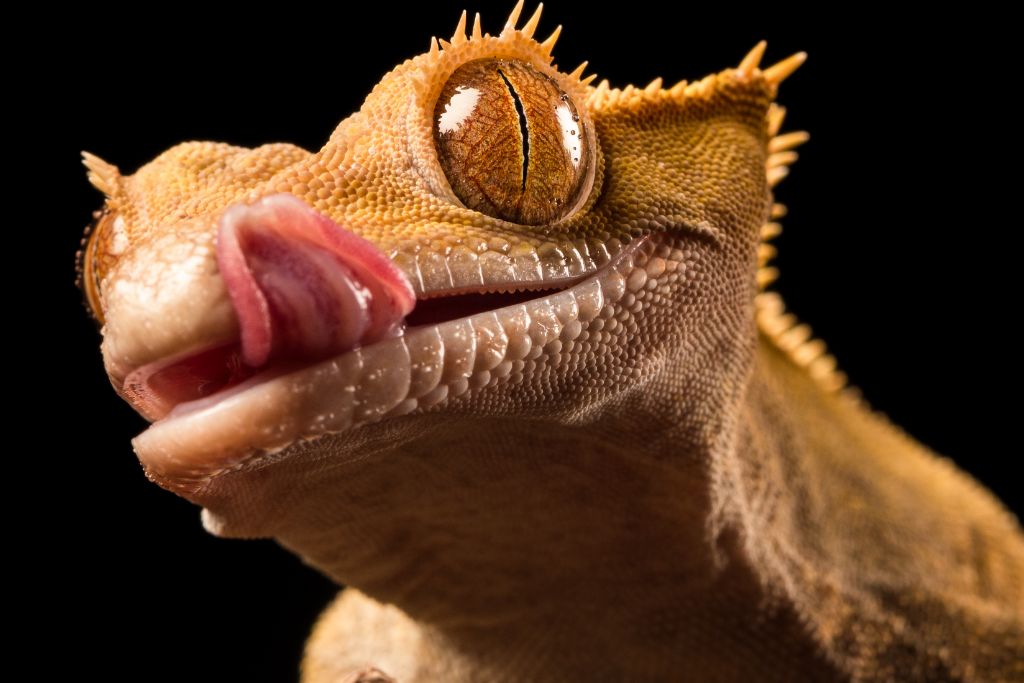
Crested geckos are born with special peg-shaped teeth that look like tiny cones. These unique teeth are their tools for exploring the world, especially for eating.
What’s cool about crested geckos is that they are polyphyodont. This just means they can replace their teeth continuously throughout their lives. As they grow and play, their teeth stay sharp and ready for action.
When it comes to eating, crested geckos don’t chew like we do. Instead, they use their teeth to quickly snap at their food, showing off their hunting skills. It’s like having built-in chopsticks for these amazing little reptiles! Understanding how their teeth work gives us a peek into the clever adaptations that make them stand out in the world of reptiles.
Types of Crested Gecko Teeth
Crested geckos have various teeth serving specific purposes. These teeth play a crucial role in their survival, feeding habits, and interactions within their habitat. Let’s take a peek at the types of teeth that make up their special dental toolkit:
- Peg-Shaped Conical Teeth: These are the tiny, pointed teeth with which crested geckos are born. They use these teeth to explore and interact from the moment they hatch.
- Maxillary and Mandibular Teeth: Crested geckos have teeth in both their upper (maxillary) and lower (mandibular) jaws. These teeth contribute to their ability to snap at prey and perform precise feeding movements.
- Replacement Teeth: As polyphyodont, crested geckos continuously replace their teeth throughout their lives. This ensures their teeth remain sharp and functional, adapting to the wear and tear of their active lifestyles.
4 Functions and Importance of Crested Gecko Teeth
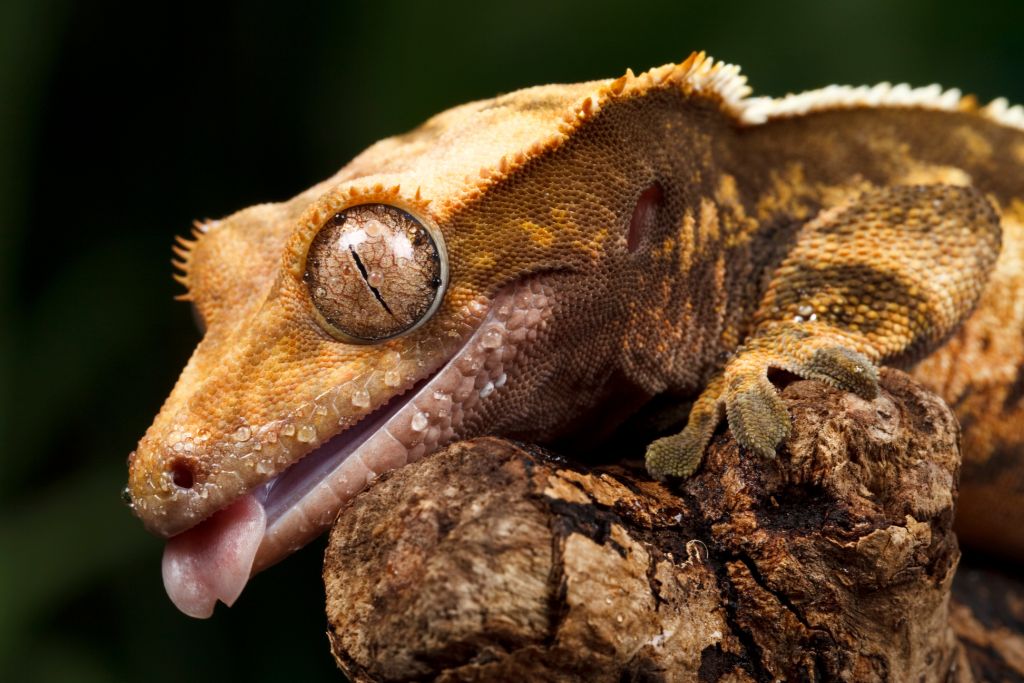
Crested gecko teeth play a vital role in their daily lives. They contribute to functions that are essential for their survival and well-being. Studying these teeth helps us understand how they live.
- Efficient Feeding: The primary role of crested gecko teeth is in their feeding habits. These teeth, including the peg-shaped conical ones, enable the geckos to snap at prey precisely. This efficient feeding is vital for getting the nutrition they need to thrive.
- Navigating Their Environment: With teeth in both upper and lower jaws, they use them to navigate their surroundings. These teeth help grip surfaces and enable quick movements. They allow geckos to explore their surroundings with agility.
- Continuous Adaptation: The ability of crested geckos to replace their teeth is very important. Their teeth constantly renew, keeping them sharp. This helps them handle the strain of climbing, hunting, and other active activities.
- Territorial Display and Communication: Their teeth are also involved in their special way of talking to each other. When crested geckos show off or interact, they might subtly show their teeth. This is like a visual signal to possible rivals or mates, adding to their complicated social life.
Dental Health and Care for Crested Geckos
Caring for your crested gecko’s well-being is a holistic task. Their dental health is crucial for their overall health. Recognizing the importance of dental care is the first step to making sure your reptile friend is happy and thriving. Below are some guidelines for maintaining the dental health of your crested geckos:
- Balanced Diet for Strong Teeth. Start by providing a well-balanced diet, rich in nutrients. A diverse and nutritious menu is essential. It should include appropriate live insects, fruits, and a high-quality crested gecko diet. This variety supports dental health by promoting the strength and longevity of their teeth.
- Calcium Supplementation. Enhance your gecko’s dental strength by ensuring adequate calcium intake. Calcium is vital for maintaining healthy teeth and bones. Dust their food with a calcium supplement to support their dental well-being.
- Offer Proper Chewing Surfaces. Ensure that your gecko has access to suitable surfaces for chewing. Natural branches or specialized reptile-safe items are useful for providing beneficial chewing outlets. They help maintain your crested gecko’s teeth naturally and prevent overgrowth or dental issues.
- Regular Monitoring and Health Checks. Regularly check your gecko’s health, including a brief inspection of their oral cavity. Keep an eye out for abnormalities, like discolored teeth or changes in eating behavior. Early detection is crucial for addressing potential dental issues.
- Hydration for Overall Well-Being. Hydration is essential for your gecko’s overall health, including their oral well-being. Ensure a properly humidified enclosure and provide a shallow dish of clean water for them to drink. This simple step supports overall well-being, including dental hygiene.
- Avoid Excessive Handling of the Head. When handling your crested gecko, be gentle and avoid unnecessary stress to the head and mouth area. Avoid excessive handling of their head to prevent accidental injuries to their delicate dental structures. This also promotes a stress-free environment for your crested gecko.
Comparisons with Other Reptiles
Crested geckos have special teeth that make them different from other reptiles. Snakes have numerous sharp teeth to catch and eat prey whole. In contrast, crested geckos have small, pointed teeth arranged in rows.
These teeth are made for grabbing and tearing softer foods. This unique dental structure is because crested geckos eat a mix of insects, fruits, and nectar.
Geckos have unique teeth that are important for their diverse diet. Bearded dragons have flat teeth to grind plants. On the other hand, crested geckos have pointed teeth. These teeth help them eat different kinds of foods. It allows them to do well in their natural habitats where they can find insects and ripe fruits.
They have special teeth that match their tree-dwelling life and eating habits. Their curved, pointed teeth help them grab branches and bite into soft fruits or insects while moving around in trees. These teeth not only help them get food but also make them more agile and better able to survive in the wild.
In comparison to other reptiles, crested geckos’ teeth are different. They are unlike venomous snakes with sharp fangs or turtles with crushing plates. The geckos’ teeth are versatile, letting them catch and eat many kinds of prey. This shows how their teeth can adapt to different feeding situations.
Conclusion
Ensuring the happiness and health of crested geckos is closely tied to their dental care. Paying careful attention to their teeth is crucial for their overall well-being and happiness. The effort we put into their dental health directly influences how long they live happily in our care.
Understanding dental care means we take on the duty of attentive caregivers. This active role directly adds to the well-being and flourishing life of our captivating companions.
To sum it up, let’s fully commit to looking after the dental health of crested geckos with dedication. As caretakers, we have a vital role in ensuring their ongoing happiness. Consider dental care more than just a routine. It becomes a promise to foster a lively and fulfilling life for our unique companions.
FAQs
Do Geckos Have Teeth?
Yes, geckos have teeth. They are small and typically found on the upper jaw, but they may also have some on the lower jaw. The exact number and arrangement of teeth can vary among different species of geckos.
Do Crested Geckos Lose Their Teeth?
Crested geckos can lose their teeth naturally as they grow. They continuously regrow them throughout their lives. Tooth loss in crested geckos is a normal part of their dental care and occurs periodically, with varying frequencies.
Do Gecko Bites Hurt?
A gecko’s bite is generally not painful for humans, as their teeth are small and not designed to cause harm. However, it’s essential to handle geckos with care to prevent stress and potential biting.

